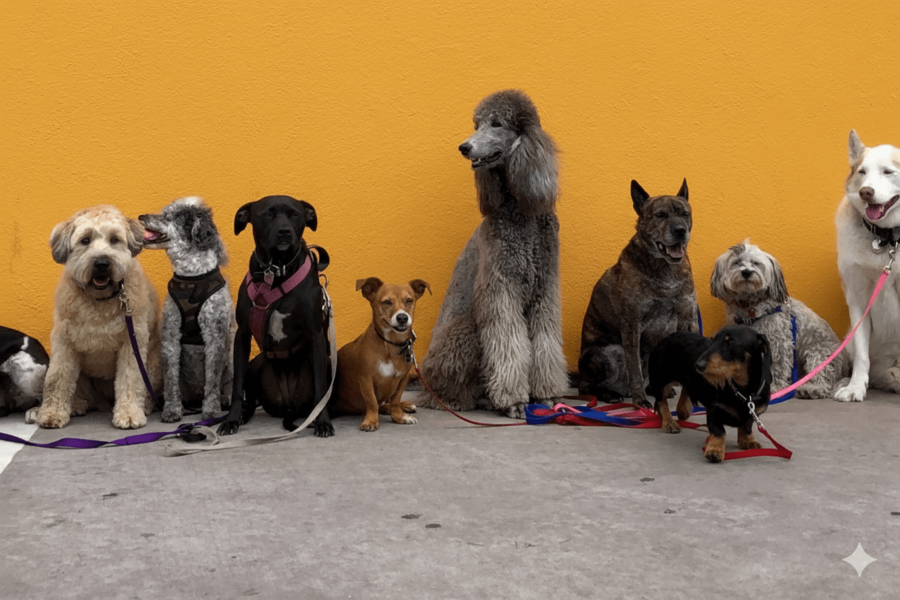
The Great Dane, often referred to as the "gentle giant," is a breed that commands attention with its impressive stature and elegant appearance. Despite their imposing size, Great Danes are known for their friendly and affectionate nature, making them excellent companions for those who can accommodate their needs.
History and Origin
The Great Dane’s history dates back over 400 years to Germany, where they were originally bred for hunting large game such as boar. These powerful dogs were prized for their speed, strength, and courage. Over time, the breed evolved into a more refined and less aggressive dog, becoming the companionable giants we know today. Despite the name "Great Dane," the breed has no direct ties to Denmark.
Physical Characteristics
- Size: Great Danes are one of the largest dog breeds. Males typically stand between 76-86 cm at the shoulder, while females are slightly shorter, ranging from 71-81 cm.
- Weight: Their weight is proportionate to their height, with males usually weighing between 64-82 kg and females ranging from 50-64 kg.
- Body: The Great Dane has a long, muscular body with a deep chest and strong, straight legs. Their overall build is balanced and elegant, emphasising both strength and grace.
- Coat: Their coat is short, dense, and smooth, lying close to the body. Common coat colours include fawn, brindle, blue, black, harlequin (white with irregular black patches),and mantle (black with white markings).
- Head: The Great Dane’s head is long and narrow, with a well-defined stop. Their ears are traditionally cropped in some countries, but in the UK, they are usually left natural, flopping forward.
- Tail: The tail is long, tapering to a point, and is carried low when the dog is at rest but raises slightly when they are alert or excited.
Temperament
Great Danes are known for their gentle and affectionate nature, earning them the nickname "gentle giants." They are friendly, loyal, and good-natured, making them excellent family pets. Despite their size, they are generally calm and patient, even with children, though their large size means supervision is necessary to prevent accidental knocks.
Great Danes are intelligent and can be trained easily, though they do have a stubborn streak at times. Early socialisation and consistent, positive training methods are key to raising a well-behaved Great Dane.
Health and Lifespan
The average lifespan of a Great Dane is relatively short, typically around 7-10 years. This is largely due to their size, as larger breeds generally have shorter lifespans. Some common health issues in Great Danes include:
- Hip Dysplasia: A genetic condition where the hip joint doesn’t fit properly, leading to arthritis and pain.
- Bloat (Gastric Torsion): A serious condition that can affect deep-chested breeds like the Great Dane, where the stomach fills with gas and twists. This is a medical emergency requiring immediate attention.
- Heart Problems: Great Danes are prone to dilated cardiomyopathy, a condition where the heart becomes enlarged and weakened.
- Bone Cancer: Osteosarcoma is more common in large breeds and can be a concern in Great Danes.
Care and Grooming
- Exercise: Despite their large size, Great Danes are relatively moderate in their exercise needs. A daily walk of about 30-60 minutes, combined with some playtime, is usually sufficient. They should be allowed to exercise at their own pace, especially when young, to prevent strain on their developing joints.
- Grooming: Great Danes are low-maintenance in terms of grooming. Their short coat requires only occasional brushing to remove loose hairs. However, they do shed year-round, so regular grooming helps to keep this under control.
- Feeding: Due to their size, Great Danes require a significant amount of food. It’s important to feed them a high-quality diet formulated for large breeds, and to divide their daily food intake into two or more meals to reduce the risk of bloat.
- Veterinary Care: Regular check-ups with a vet are essential to monitor their health, especially regarding their heart and joints. Given their propensity for certain health issues, early detection is key to managing any potential problems.
Living Conditions
Great Danes are surprisingly adaptable and can live in smaller homes or flats as long as they get enough exercise. However, their size means they need space to move around comfortably. They are best suited to homes with access to a garden. Despite their size, they are indoor dogs and should not be left outside for extended periods. They are very social animals and thrive on companionship, preferring to be close to their family members.
Conclusion
The Great Dane is a breed that combines the best of both worlds—an imposing presence and a gentle, loving nature. While their size and specific health concerns require careful consideration, they make loyal and affectionate companions for those who can accommodate their needs. With proper care, training, and plenty of love, a Great Dane can be a wonderful addition to any household, bringing both joy and a touch of elegance to their owners' lives.
You can take a look at all of our Great Danes for sale or feel free to contact us if you have any questions.
